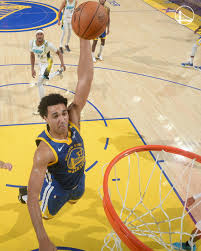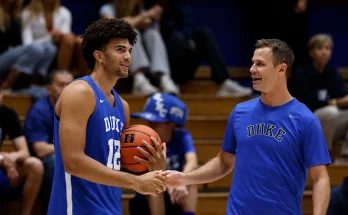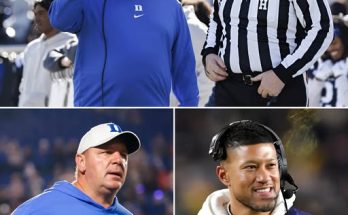Jason Richardson, often hailed as one of the most electrifying dunkers in NBA history, left an indelible mark on basketball fans during his tenure with the Golden State Warriors. Known for his explosive leaping ability, creativity in mid-air, and knack for finishing plays with a flair that felt both raw and artistic, Richardson brought an energy to the game that was impossible to ignore. His dunks were not just about scoring two points; they were statements—powerful messages that showcased his athleticism, timing, and fearlessness. To fully appreciate the scope of his dunking prowess, one has to look at the highlights he delivered against nearly every team in the league during his years as a Warrior. Each opponent saw a different kind of dunk, as Richardson had a unique ability to adapt his style depending on the defense, the game situation, and the crowd’s energy. His performance wasn’t just about physical dominance; it was about showmanship and pushing the boundaries of what fans expected from an in-game dunk.
When facing teams like the Los Angeles Lakers, Richardson seemed to elevate his game to another level. Rivalry games always bring out the best in competitive players, and Richardson understood that a thunderous dunk could change the momentum of a game. One of his most iconic dunks came during a fast break against the Lakers, where he soared past defenders and slammed the ball with such force that it silenced the crowd momentarily before erupting into applause. Richardson wasn’t just dunking to score—he was delivering a message of fearlessness. Against a team known for its star power and dominant presence in the paint, especially during the era of Shaquille O’Neal, Richardson’s ability to challenge big men at the rim and finish with authority highlighted his lack of intimidation. These kinds of moments showcased why he was regarded as one of the most athletic players in the league.
The Sacramento Kings, the Warriors’ Northern California rivals, also felt the brunt of Richardson’s dunking mastery. In games against the Kings, he often used his quick first step to blow past defenders and elevate over their bigs. A memorable dunk against Sacramento came in a half-court set where Richardson cut backdoor, caught an alley-oop pass, and hammered it down over a rotating defender. This was the kind of play that made coaches and teammates shake their heads in disbelief because few players in the league could jump with the combination of power and finesse that Richardson had. He was known for taking seemingly routine plays and turning them into highlight reels, often catching opposing teams off-guard with his sudden burst of athleticism.
Against teams like the Dallas Mavericks, Richardson demonstrated his versatility as a dunker. While some dunkers relied solely on fast breaks or open lanes, Richardson could create a poster dunk even in traffic. One standout dunk against Dallas occurred after he grabbed an offensive rebound and immediately elevated, slamming the ball over multiple defenders before they could react. This type of dunk not only energized the Warriors but also demoralized the Mavericks, who were left scrambling to recover from such an emphatic play. Richardson’s timing was impeccable—he knew when to rise and when to hang in the air just long enough to avoid being blocked. It was this combination of timing and creativity that made his dunks so memorable and impactful.
When facing teams with elite shot blockers, such as the San Antonio Spurs, Richardson’s dunks were tests of courage and skill. The Spurs, led by Tim Duncan and other defensive specialists, were known for their disciplined defense, but Richardson had no problem challenging them at the rim. One of his signature dunks against the Spurs involved driving baseline, seemingly cornered by the defense, only to explode upward and throw down a reverse dunk that left both the crowd and defenders stunned. What made this dunk so special was not just its difficulty but Richardson’s ability to read the defense and improvise mid-air. This adaptability set him apart from other dunkers, as he could shift his body, change angles, and finish plays that most players would shy away from attempting.
Richardson also saved some of his most electrifying dunks for games against Eastern Conference powerhouses like the Miami Heat and Detroit Pistons. Against the Heat, he once completed a windmill dunk in transition that looked like something straight out of a dunk contest, yet it happened during a live game with defenders trailing him. That windmill, executed at full speed, demonstrated his insane body control and strength. It wasn’t just about getting the crowd hyped; it was about giving his team a psychological boost and showing that he could do things that few others could even dream of. His dunks against the Pistons often came through contact, as Detroit’s defense was famously physical during that era. Richardson’s ability to absorb contact, hang in the air, and still finish with authority made him a nightmare for any team trying to keep him away from the rim.
Another unforgettable dunk came against the New York Knicks, where Richardson turned a broken play into one of the most jaw-dropping moments of the season. After a missed shot and a loose rebound, Richardson found himself with the ball near the three-point line. Without hesitation, he drove hard to the basket, took off just inside the free-throw line, and delivered a powerful one-handed slam over a defender attempting to take a charge. Plays like this were quintessential Richardson—unpredictable, fearless, and explosive. His ability to create highlight moments out of chaos was something that Warriors fans cherished during his time in Golden State.
Against smaller-market teams like the Memphis Grizzlies or the Charlotte Hornets, Richardson had more opportunities to experiment with creative dunks. He would often throw down tomahawk slams, reverse jams, or acrobatic alley-oops that left fans in awe. One particularly memorable dunk came during a game against Memphis when Richardson caught a lob that was thrown slightly behind him. Instead of missing the opportunity, he adjusted mid-air, contorted his body, and still managed to flush the ball down with authority. This showcased not only his athleticism but also his coordination and ability to finish difficult plays. These kinds of moments made Richardson a must-watch player whenever the Warriors were on national television.
Against teams like the Boston Celtics, Richardson’s dunks were often a blend of power and grace. He understood the importance of momentum, especially against historically strong franchises. One highlight against Boston featured Richardson attacking the rim on a fast break, spinning mid-air to avoid a trailing defender, and finishing with a reverse dunk that looked almost effortless. What made Richardson’s dunks so captivating was the way he made incredibly difficult moves look natural. His combination of speed, elevation, and creativity made him stand out, not just as a scorer but as an entertainer.
In matchups against defensive stalwarts like the Indiana Pacers, Richardson showcased his determination to challenge shot blockers at every opportunity. One of his best dunks against Indiana came when he took off from just outside the restricted area, rising over a 7-footer to finish a two-handed slam. The crowd’s reaction said it all—this wasn’t just an ordinary basket; it was a statement that Richardson wasn’t afraid to attack anyone, regardless of their size or reputation. His confidence in his ability to finish plays above the rim was unmatched, and it became a defining trait of his career.
Richardson’s legendary dunking ability wasn’t confined to the highlight reels alone; it had a psychological impact on the game. Opponents often had to account for his ability to explode to the rim at any moment, which opened up opportunities for his teammates. Defenders were forced to sag back or contest earlier, knowing that if Richardson got a clear lane, it could end in a poster dunk that would shift the momentum of the game. This dynamic presence made him more than just a dunker; he was a game-changer who could alter defensive strategies simply through his reputation.
Perhaps the most iconic element of Richardson’s dunking legacy was his creativity. Against teams like the Phoenix Suns or the Denver Nuggets, he would frequently attempt reverse dunks, 360 slams, or powerful one-handers off backdoor cuts. These dunks weren’t just about brute force—they were performances. Richardson’s two-time Slam Dunk Contest victories are often cited as evidence of his creativity, but what set him apart was his ability to bring that same creativity into actual NBA games. Few players could execute a reverse windmill dunk during live action, but Richardson did it with such regularity that fans came to expect the unexpected.
As a Warrior, Richardson was part of a transitional period for the franchise, one where the team wasn’t always competing for championships but still had a loyal fan base hungry for excitement. Richardson gave them that excitement every night, especially with his high-flying plays. Whether it was a fast break against the Chicago Bulls, where he would take off from near the free-throw line and hammer home a dunk, or a clutch moment against the Cleveland Cavaliers, where he would rise above defenders in traffic, Richardson’s dunks became a form of hope and entertainment for the Warriors faithful.
Against the Toronto Raptors, Richardson’s dunks were often a product of his speed and anticipation. He had a knack for reading passing lanes, stealing the ball, and converting those opportunities into crowd-pleasing slams. One memorable play saw him steal the ball near half-court, race down the sideline, and finish with a powerful 360 dunk that left even the opposing fans cheering. Richardson’s ability to combine defense, speed, and finishing made him one of the most well-rounded high-flyers of his era.
When discussing Richardson’s best dunks as a Warrior, it’s impossible to ignore the influence he had on the culture of dunking in the NBA. During a time when the league was transitioning from the Jordan era into a new generation of stars, Richardson carried the torch for dunk enthusiasts. He showed that dunking wasn’t just for All-Star games or contests—it could be an integral part of in-game performance. His fearlessness against teams like the Philadelphia 76ers, where he once threw down a one-handed hammer over a big man during a critical run, proved that he was willing to put his body on the line to ignite his team.
Even against teams like the Utah Jazz, known for their physical style of play, Richardson found ways to rise above the contact and finish. One dunk against Utah saw him drive baseline, absorb a bump mid-air, and still throw down a reverse dunk that seemed to defy physics. Plays like this cemented his reputation as a player who wasn’t just about vertical leap but also about body control, strength, and precision. His best dunks weren’t always about height; they were about timing and execution.
Jason Richardson’s dunking career with the Golden State Warriors was a celebration of athletic artistry. Every team he faced provided a new canvas for him to showcase his talent. Against the Houston Rockets, he would often use his quickness to beat defenders off the dribble and rise for a one-handed jam. Against the Portland Trail Blazers, he would cut through the defense on backdoor plays, catching lob passes that seemed impossible to convert. Richardson had an arsenal of dunks that covered every situation—fast breaks, alley-oops, put-backs, and even half-court setups where he created his own opportunities.
His dunks were not only highlights but also teaching tools for young players who wanted to learn the art of finishing above the rim. Richardson’s technique—his approach to the basket, his ability to shield the ball, his timing when jumping—was something that aspiring players could study. Unlike some dunkers who relied solely on their natural leaping ability, Richardson combined athleticism with skill and basketball IQ. He understood angles, how to use his body to protect the ball, and how to finish even when the defense collapsed around him.
In retrospect, Richardson’s best dunks against every team in the league tell the story of a player who was more than just a high flyer. He was a competitor, a showman, and a key part of the Warriors’ identity during his years there. His highlights remain etched in the memories of basketball fans, not just because of their aesthetic beauty but because of the passion and energy he brought to the game. Jason Richardson didn’t just dunk; he inspired. His performances against every NBA team were chapters in a larger narrative of what it means to play the game with heart, creativity, and fearlessness.



